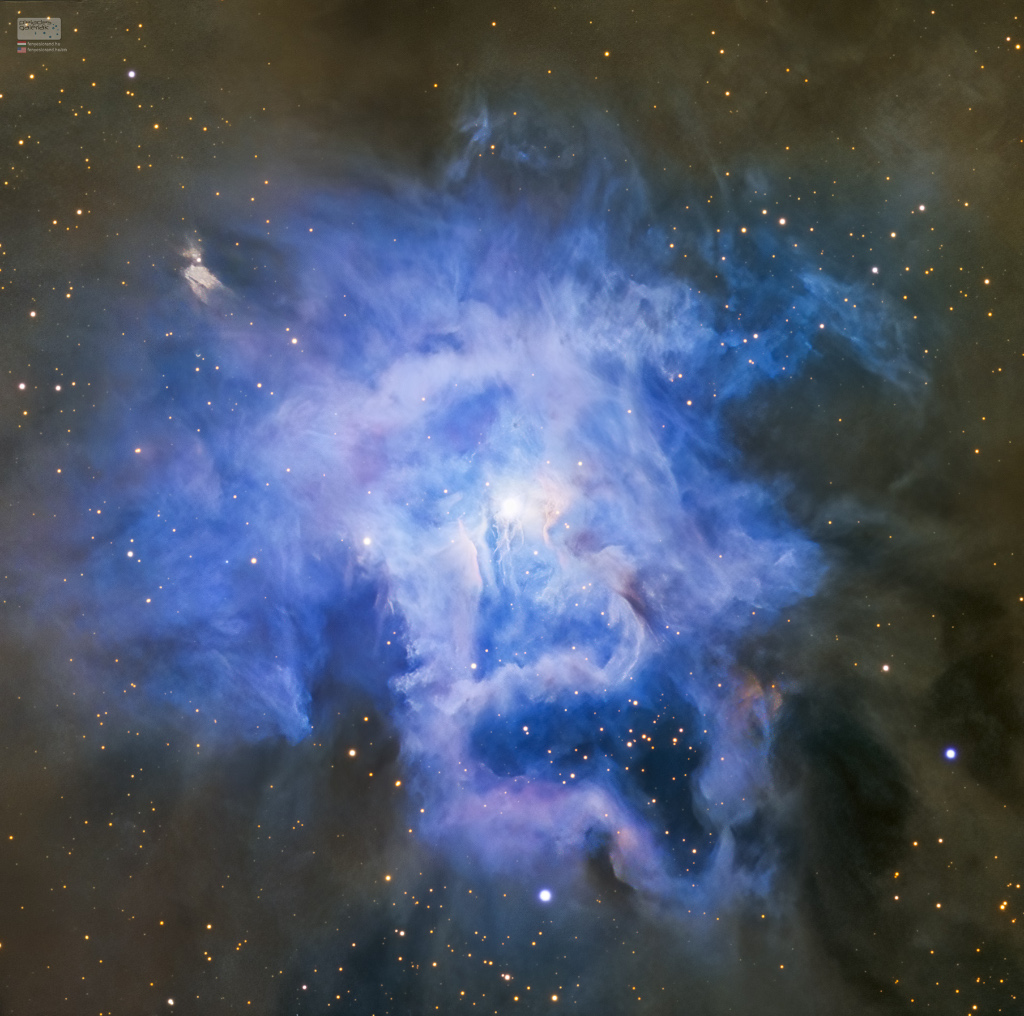2023年9月2日
NGC 7023: The Iris Nebula
Image Credit & Copyright: Lorand Fenyes
Explanation: These cosmic clouds have blossomed 1,300 light-years away in the fertile starfields of the constellation Cepheus. Called the Iris Nebula, NGC 7023 is not the only nebula to evoke the imagery of flowers. Still, this deep telescopic image shows off the Iris Nebula’s range of colors and symmetries embedded in surrounding fields of interstellar dust. Within the Iris itself, dusty nebular material surrounds a hot, young star. The dominant color of the brighter reflection nebula is blue, characteristic of dust grains reflecting starlight. Central filaments of the reflection nebula glow with a faint reddish photoluminescence as some dust grains effectively convert the star’s invisible ultraviolet radiation to visible red light. Infrared observations indicate that this nebula contains complex carbon molecules known as PAHs. The dusty blue petals of the Iris Nebula span about six light-years.
Tomorrow’s picture: a cosmic souffle
NGC 7023:鸢尾花星云
影像提供与版权: Lorand Fenyes
说明: 这些形似宇宙花朵的云气,绽放在仙王座方向1,300光年远处的繁星之间。编录号为NGC 7023的鸢尾花星云,并不是天空中唯一会让人联想到花朵的星云。然而,这幅望远镜深空影像,忠实的呈现了镶在周围星际尘埃里的鸢尾花星云之色彩和对称性。在鸢尾花星云之内,尘埃云气围拱在一颗炽热年轻恒星的周围,而尘埃颗粒所反射星光,让星云的带着鲜明的特征泛蓝色泽。在中心区,部份尘埃微粒经由光致发光过程,很有效率的将恒星不可见的紫外光转换成红光,让星云中心渲染着丝状的红色晕光。红外光波段的观测显示,这个星云含有称为多环芳香烃碳氢化合物(PAHs)的复杂分子。鸢尾花星云美丽的泛蓝花瓣,跨幅约有6光年。
明日的图片: a cosmic souffle



